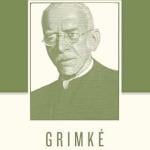Mark Steyn has some interesting comments on Maria Full of Grace on his website:
The publicity poster for Maria Full of Grace shows the face of the eponymous Maria looking up at a hand that’s proffering her mouth a vaguely Communion-like pellet. The sacramental imagery, plus the movie title, plus the character’s name, plus the fact that she’s carrying an unborn baby, and that she works at a rose plantation removing thorns, may lead the casual movie-goer to assume he’s in for a religious allegory. . . .
Maria Alvarez is played by Catalina Sandino Moreno, the sort of bright-eyed natural teen beauty every gritty indie slice-of-life needs. You’re portraying grinding poverty with dodgy fast-tracks to seedy underworlds — the more typical Colombian country gal in the midst of all that might start off with a more pronounced moustache and wind up quickly with the dead-eyed, pock-marked, hardened-beyond-her-years look of so many bit-players in the drug business. So, if you’re trying to communicate the idea of spiritual goodness at the heart of a sordid world, the luminous Miss Moreno is just perfect. She made quite a splash at all the hip film festivals, and she deserves the career bump she got, because she’s about 85 per cent of the movie. . . .
She’s a feisty, determined, likable kid, but the religious allegory thing never quite lifts off. The Sixties auteurs who started the mini-genre of finding sacred metaphors among the contemporary world’s scuzzy and downtrodden were for the most part conventionally raised Catholics working off the burthens of their childhoods. Marston, by contrast, appears to have no real feeling for the spiritual, but is just seeking a little high-toned gloss for a sweet fable.
FWIW, I have never been all that sure just what to make of this film. It did eventually sneak into my top ten for last year, largely on the strength of its performances and the seemingly realistic, even mundane, way it shows the various people involved in the drug trade. But the spiritual title made little sense to me.
I did notice how the film repeatedly drew our attention to the things inside Maria’s body, to the things she is “full of” — the food she buys, the baby she’s carrying, the drugs she smuggles, etc. — and I might have even laughed out loud during the film’s final shot, in which a mural on a wall in the background declares, rather tritely, “It’s what’s inside that counts.” (I know some people missed that bit, but that can’t have been an accident.)
But what spirituality is there in this film? As I wrote in my notes after seeing the film last July, “We see Maria praying in a church at one point — just another part of that opening half-hour that gives us a slice of typical Colombian life — and when the drug dealers in the United States watch TV, we can tell that there’s some discussion going on regarding some sort of alleged miracle (the word ‘Catholic’ comes up a lot), but there’s no real explicit or even implicit religious content in this film, apart from all that.”
Steyn’s point about the “mini-genre” created by those “Sixties auteurs” is an interesting one, since we still see evidence of that in more recent films, the most obvious example being Bruno Dumont’s La Vie de Jesus. But, like Steyn, I’m not sure Maria really earns its title, even on those terms.












